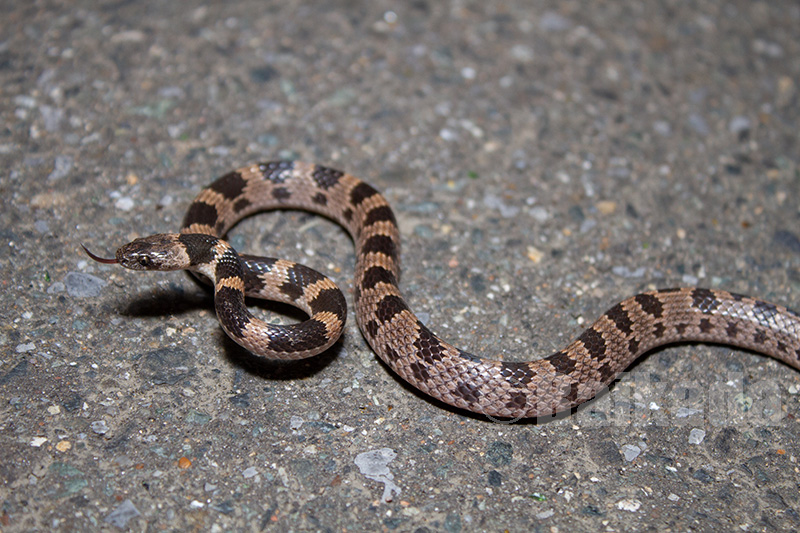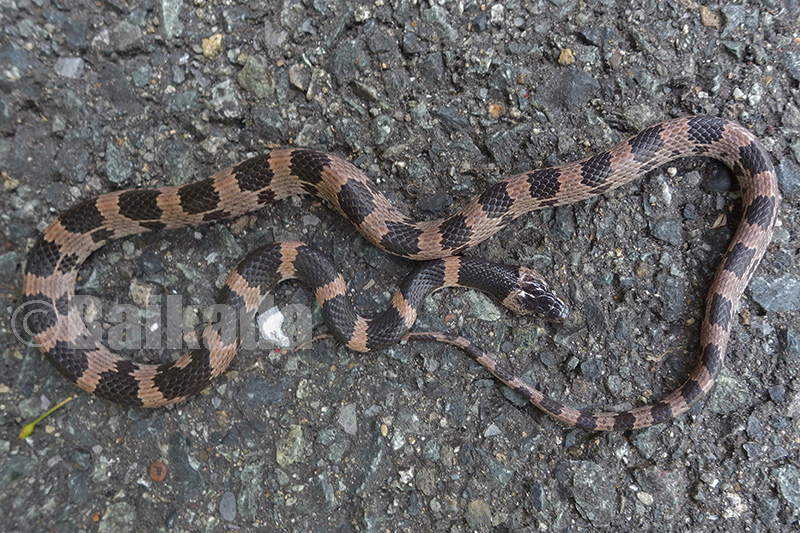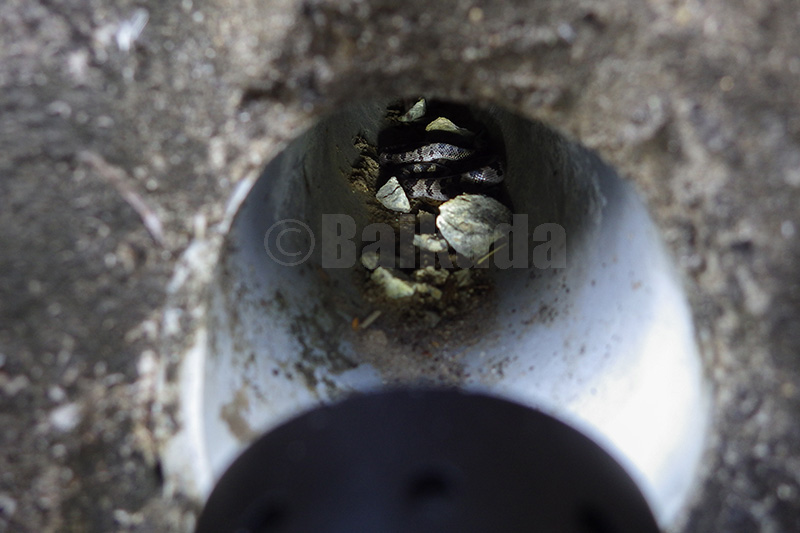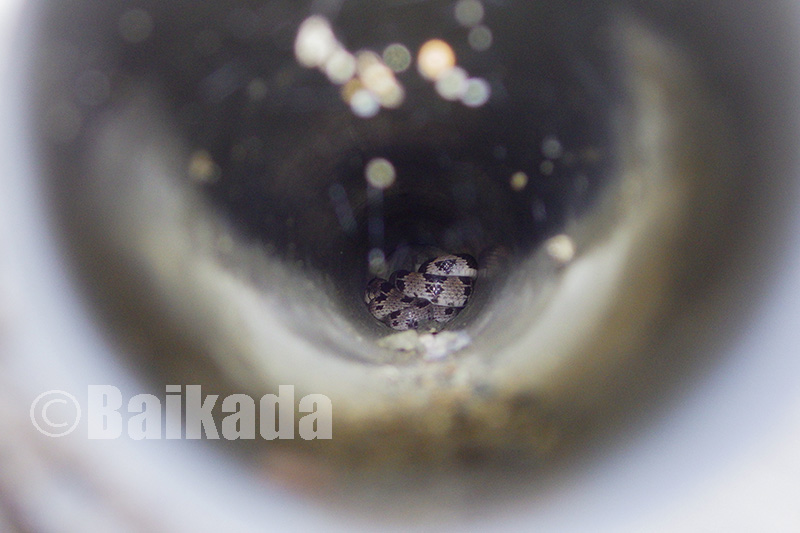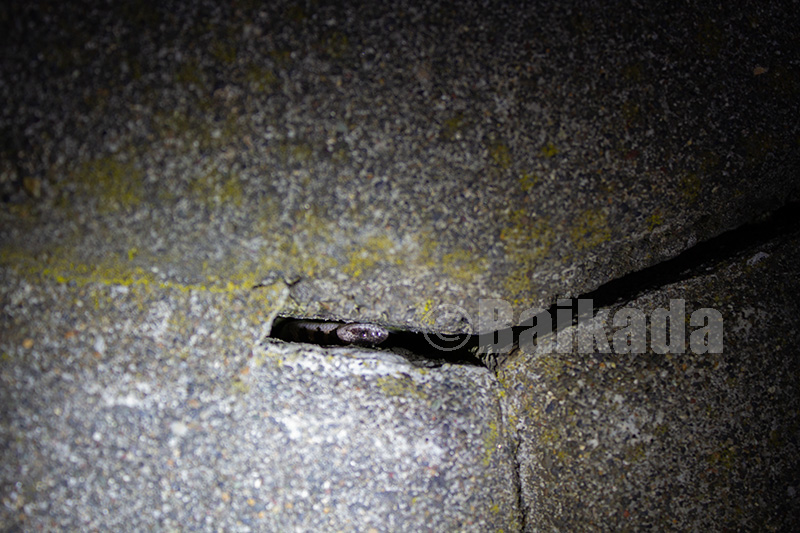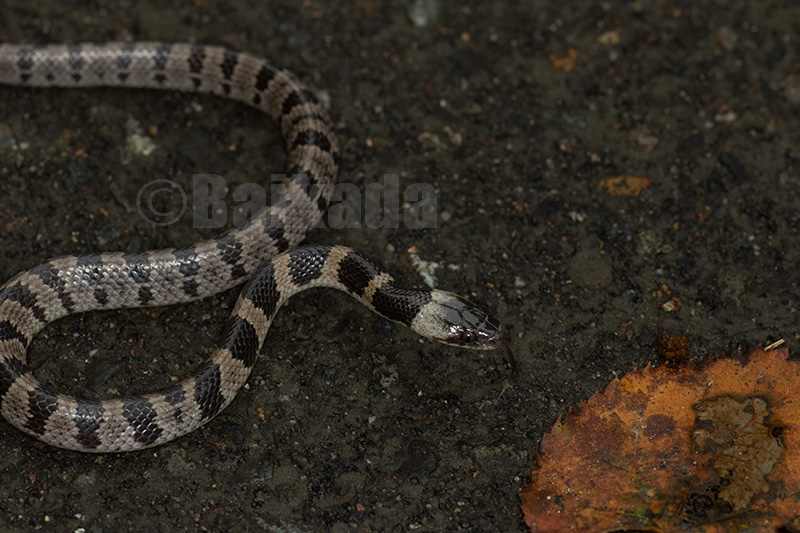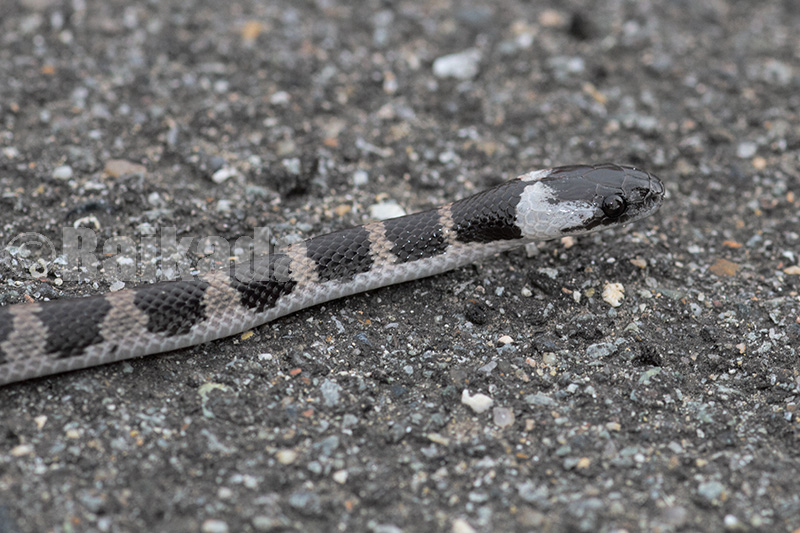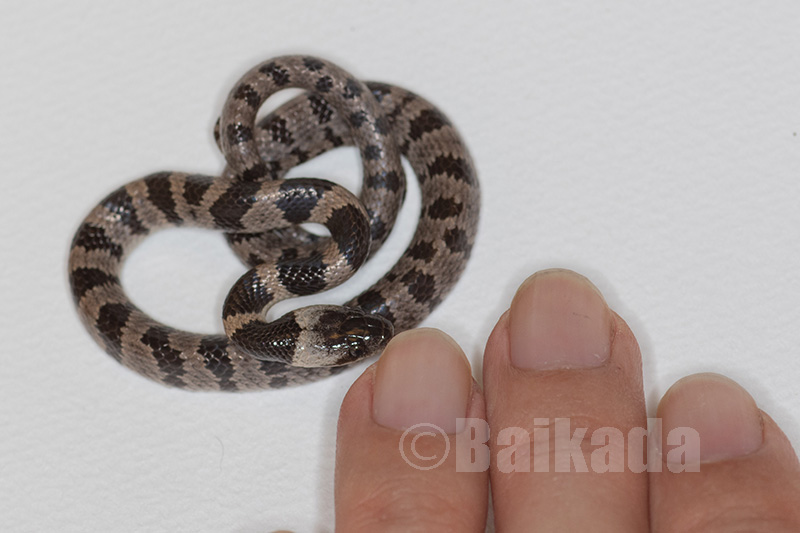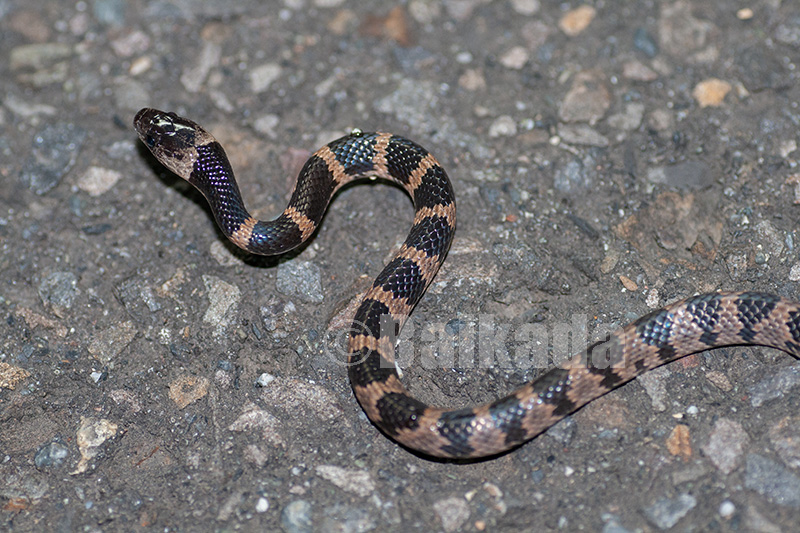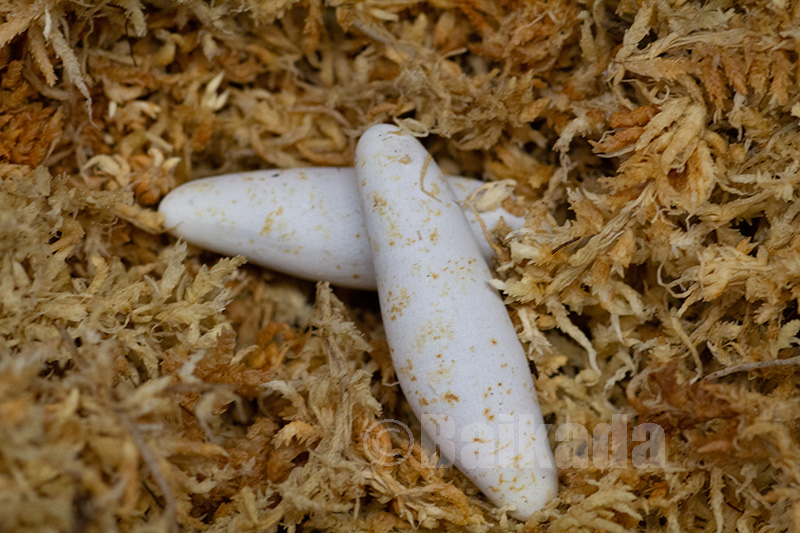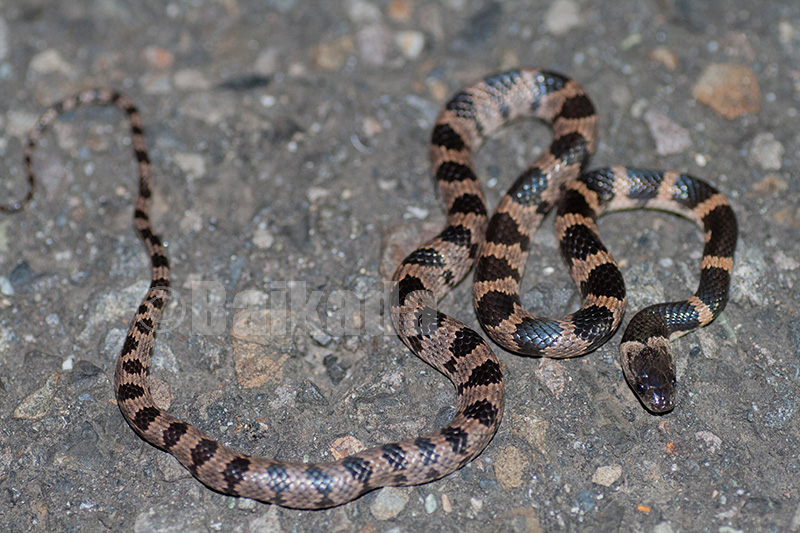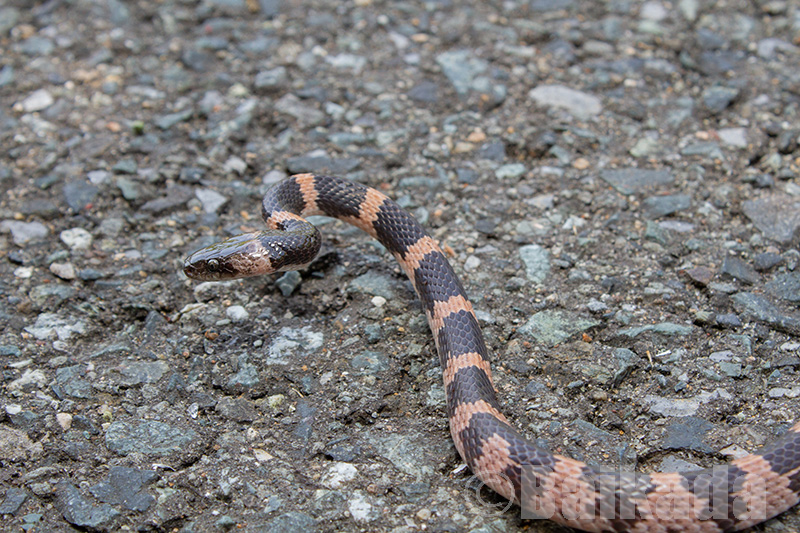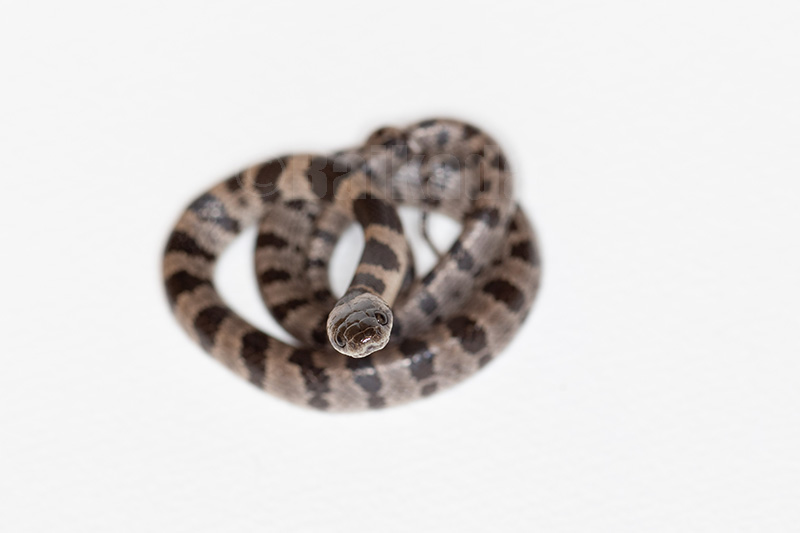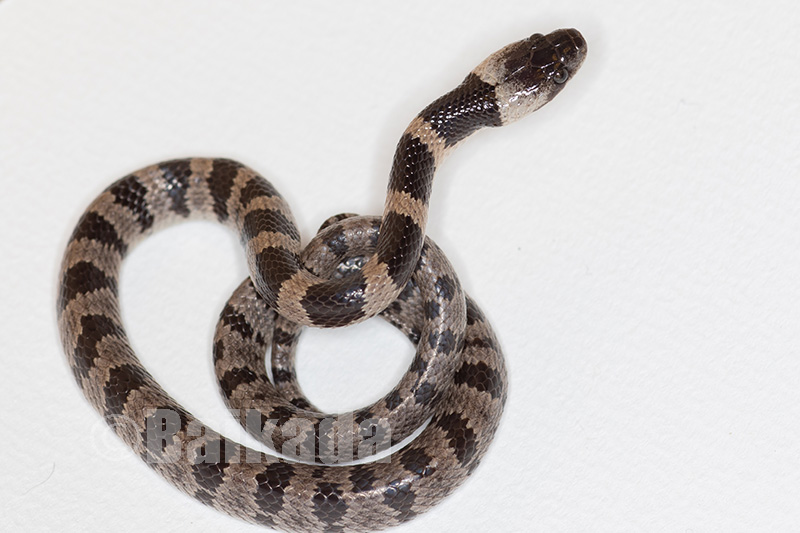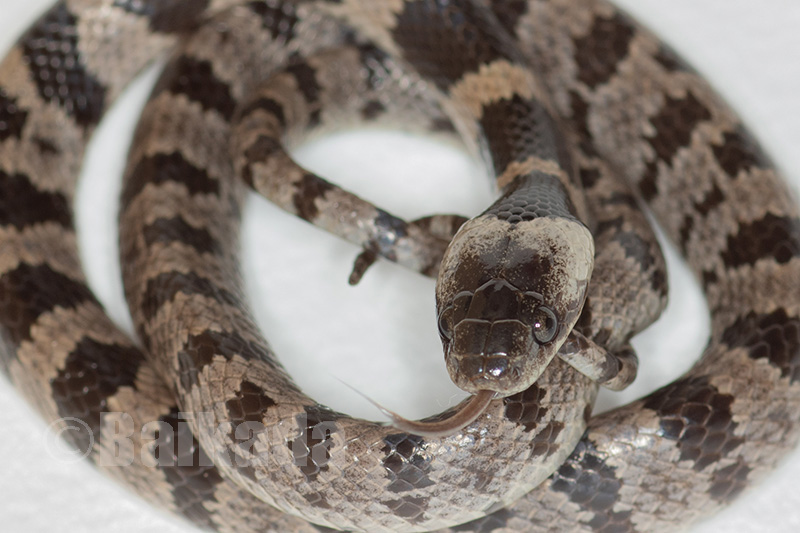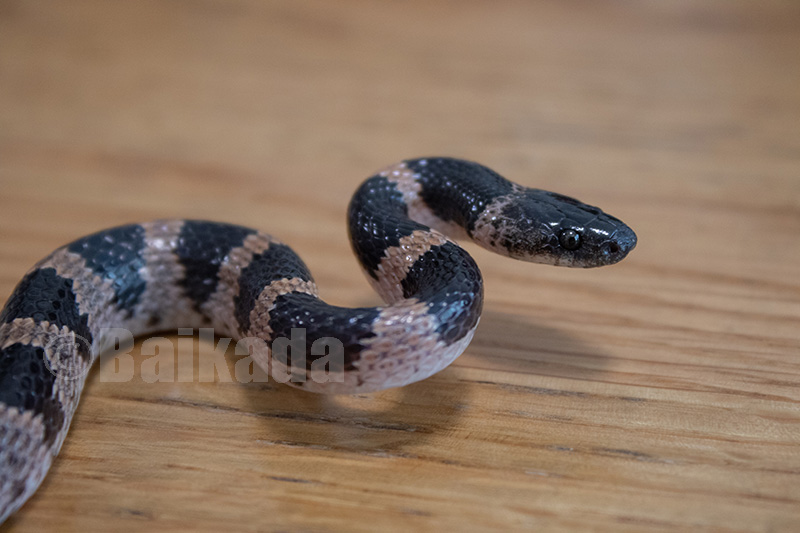*2021-10-22 記述
*ハイライト部分は著者の経験による主観なので、引用する場合は注意して下さい。
和名:シロマダラ(白斑)
英名:Oriental odd-tooth snake
学名:Lycodon orientalis
福島県産. 撮影:ばいかだ
生息地
北海道(道南と道央で部分的に記録)・奥尻島・本州・四国・九州・佐渡島・隠岐・壱岐・五島列島・女島・種子島・屋久島・硫黄島(薩南地方)・伊豆大島。
特徴
全長30~70cm。灰~茶褐色の地色に、頭部から尾端まで黒い斑紋が並ぶ。体の後半になるにつれ、斑紋は小さくなる。大きな斑紋は背中をまたぐ位置にある。頭部は黒い。目の瞳孔は楕円だが、夜は丸くなる。腹板には不規則で不明瞭な黒点が散在する。舌の色は暗褐色~赤。
福島県産, 撮影:ばいかだ
背面
福島県産, 撮影:ばいかだ
暗赤色の舌.
福島県産, 撮影:ばいかだ
頭は扁平な傾向にある
福島県産, 撮影:ばいかだ
夜間には目の瞳孔が丸く大きくなる
北海道産, 撮影:ばいかだ
腹側
体鱗
胴の大部分で17列。鱗はなめらかでキールは目立たないか、無い。
行動・習性
夜行性で地上性。神経質でよく咬む。また捕まえると総排泄口から、かなり臭い分泌物を出す。
環境
平地から山地の森林。特に低山地の森林に比較的多い。沢の周囲での発見が多い。また人工の護岸の塩ビ管の中やコンクリートの割れ目などからも見つかる。
福島県産, 撮影:ばいかだ
塩ビ管の中で休む幼蛇。
福島県産, 撮影:ばいかだ
塩ビ管の中で休む成蛇
北海道産, 撮影:ばいかだ
コンクリート壁の隙間で見つかった個体。写真が逆さまというわけではない。
食性
トカゲ類や小型のヘビを食べる。甲虫を食べたとの資料もあるが、私の私見だが、昆虫を食べる事例は何か偶発的なものか、餌動物になったトカゲなどの胃内未消化物が、シロマダラの便から出ているからではないかと考えている。
幼蛇
後頭部の鱗が顕著に白いことが多い。これは成長とともに白さが失われる傾向にある。親よりも地色の白みが強い、まさにシロマダラと呼べる非常に美しい個体もいるが、普通に茶色地のものもいる。20cm~。
北海道産, 撮影:ばいかだ
幼蛇
福島県産, 撮影:ばいかだ
幼蛇は頸部の白色部が目立つものもいる。
北海道産, 撮影:ばいかだ
とても小さい
宮崎県産, 撮影:ばいかだ
幼蛇
毒
無い。しかしよく咬み付くので痛い。傷は深くならないが、血はわりと出る。
その他
繁殖は6~8月に1~9個を産卵。45日ほどで孵化する。5~10月にかけて活動するが、盛夏には目撃が減る傾向にある。
北海道産, 撮影:ばいかだ
卵。北海道で初確認された産卵の卵。
貴重度
生息地が広いわりに生息密度は低い。個体数は少ない。その上夜行性なのでなかなか見つからない。日本固有種。環境省レッドリストでは指定なしだが、多くの都道府県でレッドリスト掲載されている。都道府県版のレッドリストの指定状況はこちら。IUCN版(世界版)Red-List Ver3.1でLeast Concernに指定されている。
主観
シロマダラという名前ではあるが、ほとんどの場合は茶色と黒のマダラヘビ。幼蛇で白みの強い個体や、成蛇で赤みがかった個体が見られるが、脱皮の前後でも体色のくすみなどが起こるので、個体変異とまで言えるものかはわからない。模様としては、八重山諸島に生息するサキシマバイカダに酷似している。サキシマバイカダはシロマダラ を引っ張って伸ばしたような細くて長いヘビです。シロマダラはヘビを探す人の中では『憧れのヘビ度』はかなり上位にランクされるようです。私の住む北海道では発見例が少なく、かなり珍しいヘビです。また、道東や道北での確認例がいまだに無いため、北海道での生息域は広くなさそう。こんなに身近で限りなく幻のヘビであるこのシロマダラが日本に生息しているのはとても素晴らしいことであり、いつまでも生き続けてほしいなと思います。
宮崎県産, 撮影:ばいかだ
幼蛇。どのヘビでもそうですが、緊張すると体を細かく波打たせた形で固まります。このような姿は顕著なストレスサインなので、注意しましょう
北海道産, 撮影:ばいかだ
北海道で初めて生きたまま捕獲された個体(2011年)
福島県産, 撮影:ばいかだ
全体的に赤みが強めの個体
北海道産, 撮影:ばいかだ
幼蛇。小さいのはとてもか弱くてかわいい。
北海道産, 撮影:ばいかだ
幼蛇は頸部の白色が強いだけでなく、白色部の範囲が大きい
北海道産, 撮影:ばいかだ
虹彩は暗色なので、瞳孔の形がわかりにくいことが多い
北海道産, 撮影:ばいかだ
希少性で大変魅力あふれる蛇だが、咬むし臭いし神経質なので、なかなか扱いは難しい蛇だと思います
注意
当ページは「へび図鑑」の1ページです。今後も新知見等出ましたら随時更新します。内容(画像を含む)の無断転記・転載は禁止です。使用する際には「ばいかだ」に一報し、サイト名(へび図鑑)、撮影者、引用URLを掲示してください。
撮影、説明の作成は、ばいかだ(徳田龍弘)が行いました。
